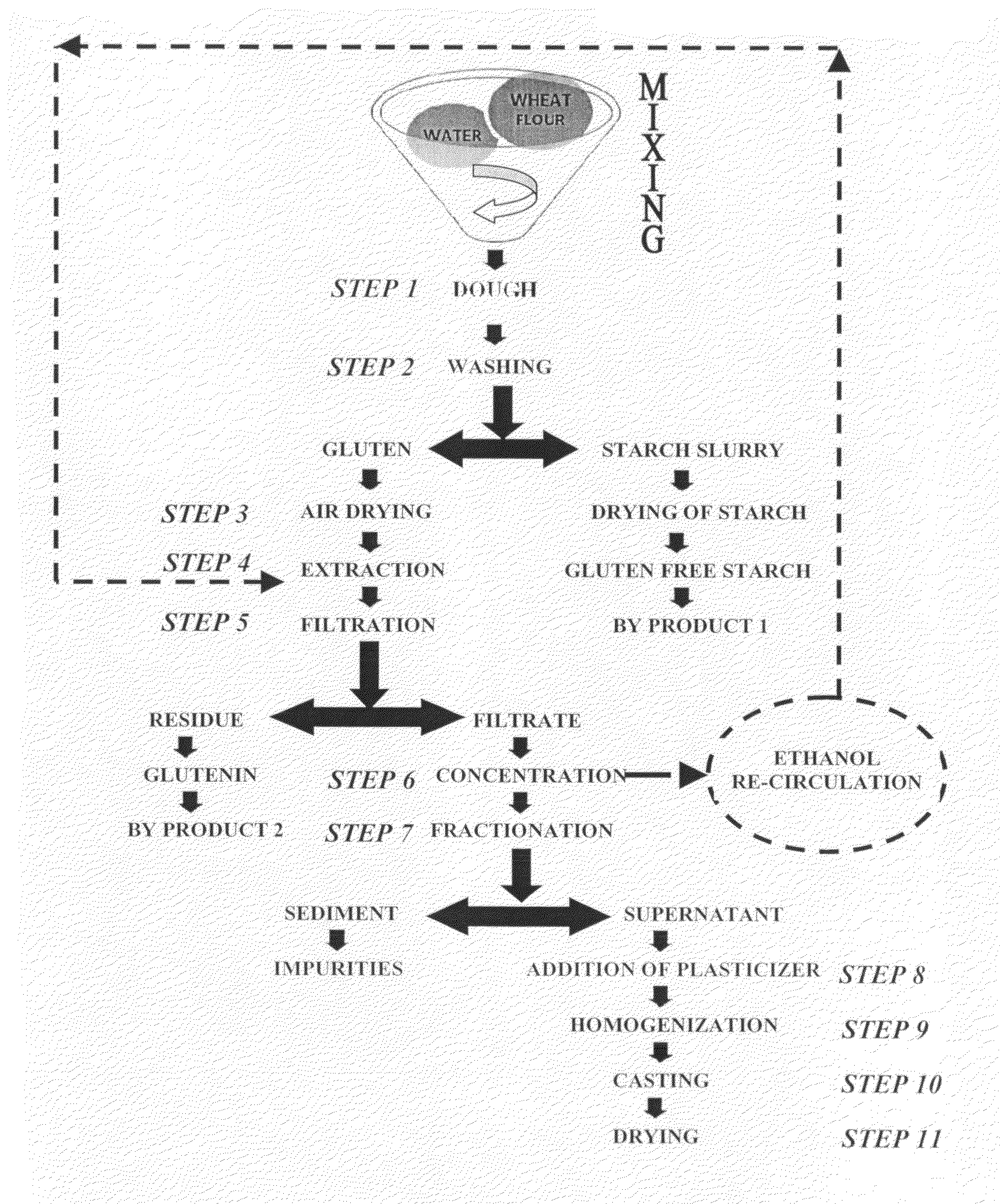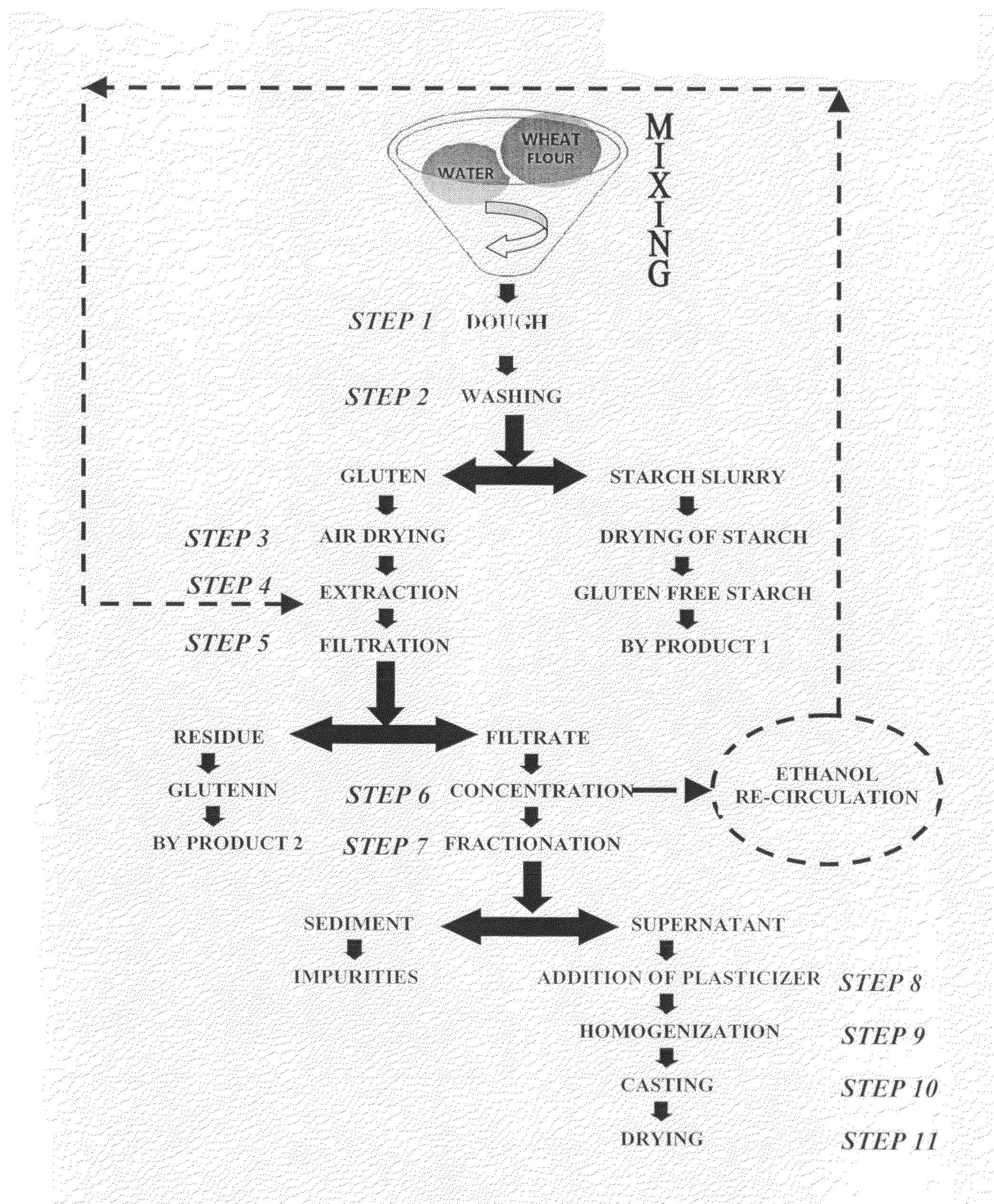Method of fractionating gliadin from wheat gluten protein and fabrication of edible film therefrom
a technology of gliadin and wheat gluten, which is applied in the field of gliadin fractionation from wheat gluten protein and the fabrication of edible films therefrom, can solve the problems of fire hazards, reluctance and hesitation of the food industry, restricting the application of gluten derived edible films and coatings, etc., and achieves excellent resistance to moisture, lipid and gas permeation, good mechanical properties
- Summary
- Abstract
- Description
- Claims
- Application Information
AI Technical Summary
Benefits of technology
Problems solved by technology
Method used
Image
Examples
example
[0045]Non-infested samples of wheat were obtained from Wheat Research Station, Sakrand, Pakistan. Each sample was mixed thoroughly by precision electronic divider (Seedburo Equipment Company, Model No. SB-106) and cleaned manually. Test weight was determined using a standard One-Liter Bucket procedure (Dexter & Tippler, 1987). Grains of each wheat variety were then milled through Perten Laboratory Mill 3100 installed with 0.8 mm sieve.
[0046]Wheat flour (1000 gm) was taken in a planetary mixer installed with hook agitator (Kenwood KM-400, U.K.) and mixed vigorously to form soft dough by adding distilled water. The water-soluble components were then leached out by repeated washing until washed water became transparent and showed negative Iodine-Starch test. The gluten was then dried in air circulating oven maintained at 40° C. for 3 hours. Dried gluten was mixed and stirred with absolute ethanol in a blender (Panasonic MJ-W176P, Japan) followed by filtration. The filtrate is then conc...
PUM
 Login to View More
Login to View More Abstract
Description
Claims
Application Information
 Login to View More
Login to View More - R&D
- Intellectual Property
- Life Sciences
- Materials
- Tech Scout
- Unparalleled Data Quality
- Higher Quality Content
- 60% Fewer Hallucinations
Browse by: Latest US Patents, China's latest patents, Technical Efficacy Thesaurus, Application Domain, Technology Topic, Popular Technical Reports.
© 2025 PatSnap. All rights reserved.Legal|Privacy policy|Modern Slavery Act Transparency Statement|Sitemap|About US| Contact US: help@patsnap.com


